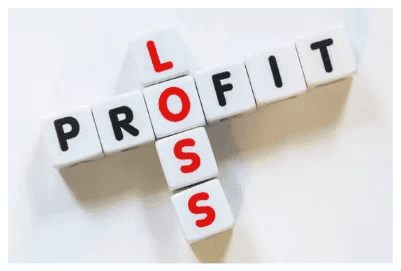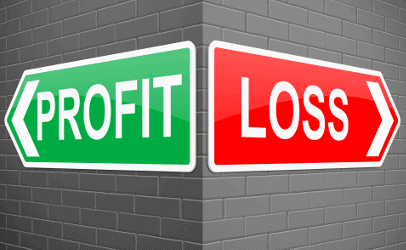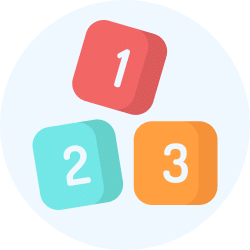Worksheet Solutions: Profit & Loss | Mental Maths - Class 1 PDF Download
| Table of contents |

|
| Understanding Profit and Loss |

|
| Identifying Profit and Loss |

|
| Simple Problems |

|
| Fun Activity |

|
Understanding Profit and Loss

Circle the correct answer:
If you buy a toy for ₹50 and sell it for ₹60, you make:
Answer: (a) Profit
Explanation: You bought the toy for ₹50, and sold it for ₹60. The selling price (₹60) is more than the cost price (₹50), so you made a profit of ₹10.If you buy a book for ₹30 and sell it for ₹25, you make:
Answer: (b) Loss
Explanation: You bought the book for ₹30, but sold it for ₹25. The selling price (₹25) is less than the cost price (₹30), so you made a loss of ₹5.
Fill in the blanks:
If you buy a ball for ₹20 and sell it for ₹30, you make a Profit of ₹10.
Explanation: Selling price (₹30) - Cost price (₹20) = ₹10 profit.If you buy a pencil for ₹10 and sell it for ₹7, you make a Loss of ₹3.
Explanation: Cost price (₹10) - Selling price (₹7) = ₹3 loss.

Identifying Profit and Loss
Draw a happy face if you make a profit, and a sad face if you make a loss:
Buying a chocolate for ₹20 and selling it for ₹25
Answer: Happy face (Profit)
Explanation: You bought the chocolate for ₹20 and sold it for ₹25. The selling price (₹25) is greater than the cost price (₹20), so you made a profit of ₹5.Buying a pencil for ₹10 and selling it for ₹5
Answer: Sad face (Loss)
Explanation: You bought the pencil for ₹10 but sold it for ₹5. The selling price (₹5) is less than the cost price (₹10), so you made a loss of ₹5.
Complete the sentence:
I bought a toy for ₹50 and sold it for ₹70. I made a Profit of ₹20.
Explanation: Selling price (₹70) - Cost price (₹50) = ₹20 profit.I bought a book for ₹40 and sold it for ₹30. I made a Loss of ₹10.
Explanation: Cost price (₹40) - Selling price (₹30) = ₹10 loss.

Simple Problems
Solve the following:
You buy a ball for ₹25 and sell it for ₹30. What is your profit?
Profit = ₹5
Explanation: Selling price (₹30) - Cost price (₹25) = ₹5 profit.You buy a notebook for ₹15 and sell it for ₹10. What is your loss?
Loss = ₹5
Explanation: Cost price (₹15) - Selling price (₹10) = ₹5 loss.
Tick (√) the correct answer:
- If you buy a toy for ₹60 and sell it for ₹80, your profit is:
Answer: (b) ₹20
Explanation: Selling price (₹80) - Cost price (₹60) = ₹20 profit.
- If you buy a toy for ₹60 and sell it for ₹80, your profit is:

Fun Activity
Draw a picture of a shop where you sell toys and write the price of the toys you sell:
- (Students will draw their shop and write the prices of toys they sell, e.g., Toy A = ₹50, Toy B = ₹60.)
Colour the profit and loss signs:
- Colour the "Profit" sign in green and the "Loss" sign in red.
(Students will colour the profit and loss signs to help them remember the difference.)
- Colour the "Profit" sign in green and the "Loss" sign in red.

|
39 videos|158 docs|19 tests
|
FAQs on Worksheet Solutions: Profit & Loss - Mental Maths - Class 1
| 1. What is the difference between profit and loss? |  |
| 2. How can a company increase its profits? |  |
| 3. What are common expenses that can lead to a business experiencing a loss? |  |
| 4. How can a business calculate its profit margin? |  |
| 5. What are some strategies for managing losses and turning a profit? |  |















